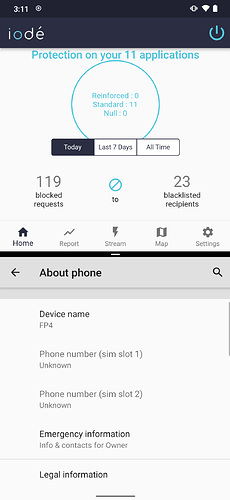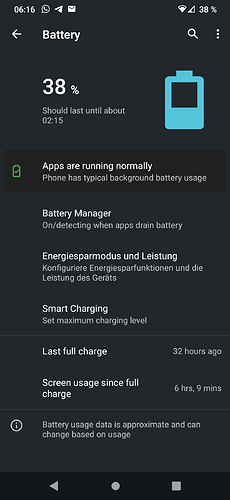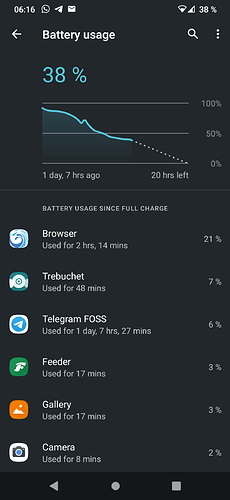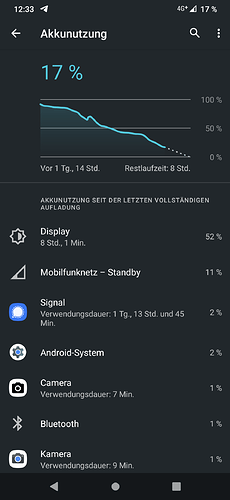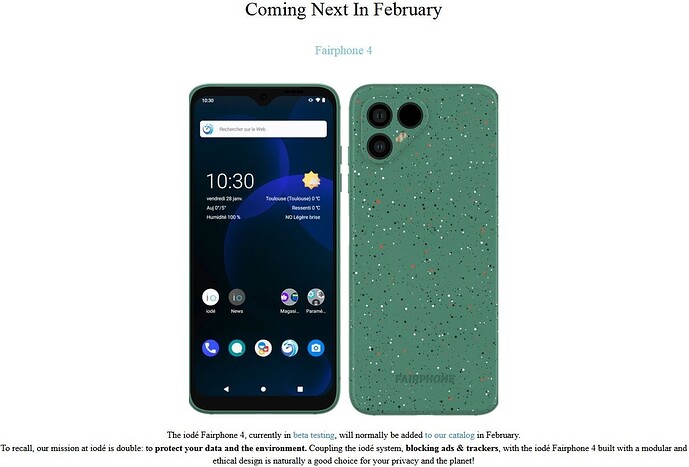how cool is that then… am already looking forward to
Tomorrow morning starts the installation of the beta 

I’m very excited
My first experience:
*********** Edit 24.01.2022: ***********
New beta 20220123 available
*********** Edit 25.01.2022: ***********
With FP-OS and all Google services uninstalled, I was extremely happy with the battery performance and my SoT. 5-6 hours SoT.
After installing /e/OS I was brutally disappointed. Battery was soon empty faster than I could look.
Now with iodeOS everything is great again.
I am more than satisfied.
SoT over 6 hours and 38% battery left
*********** Edit 25.01.2022: ***********
Another positive point: I can now use trebuchet launcher in pure culture again.
No more need for lawnchair or omega.
how’s the NFC situation? 
No need to complain.
Everything works great for me.
Can be switched on and off. The menu is always there, unlike /e/OS.
NFC tags are permanently recognized.
Stable situation
I was able to root iodéOS with a few tricks.
I had to extract the boot image using TWRP.
You can do that yourself (shown below) or download this patched boot image I created:
iode-2.3-20220123-FP4-UNOFFICIAL-rooted-boot.img
(Should work for future releases too)
Extract boot image with TWRP and patch it yourself
You have to use TWRP because iodéOS recovery doesn’t allow adb shell.
If you boot TWRP via fastboot boot twrp.img it gets stuck.
For some reason, you have to install it.
- Install iodéOS and unlock bootloader
- Enter bootloader:
adb reboot bootloader - Get current slot:
fastboot getvar current-slot - Install TWRP:
fastboot flash recovery twrp-3.6.0_FP4-UNOFFICIAL-20211216.img - Enter TWRP:
fastboot reboot recovery - “Mount” → “Disable MTP”
- Extract boot image (replace [slot] with current slot):
adb shell dd if=/dev/block/bootdevice/by-name/boot_[slot] of=/system/boot.img
adb pull /system/boot.img
- Reboot and copy boot.img to sdcard:
adb push boot.img /sdcard - Patch boot.img with Magisk app
- Transfer / adb pull that patched boot.img to your PC
- Follow root guide
Root
- Unlock bootloader (will reset your phone)
- Reboot to bootloader:
adb reboot bootloader - Boot patched boot image:
fastboot boot patched_boot.img - Open the Magisk app
- Cancel “Requires Additional Setup”
- Choose “Install” → “Direct Install” and “Reboot”
- Your phone is now rooted, you can’t lock the bootloader again
Third Beta startet today.
so far a very stable, clean and fast custom ROM
I’m gonna wait for the stable release, looking forward to trying it out.

iodeOS has the same problem as /e though: forcing you to use microg instead of allowing you to choose what you want
Incorrect!
Can be completely deinstalled via app chooser
Really? Isn’t it integrated into the OS like it is with /e?
Yes it is, but with iodè you have, instead of /e/OS, the possibility to deinstall all pre-installed apps, including system apps.
There’s an extra option under settings/apps/Preinstalled apps
Does that mean you can get gapps working properly? I wanted to give microg a try but a ton of stuff depends on play services and didn’t work on /e (even DRM protected content like Netflix or Prime Video)
Yes but considering Gapps can’t be flashed AFTER first boot, it basically means you can only choose between microG or nothing, not really much of a choice.
Consequently, no ![]()
I moved the Iode discussion from LOS to Iode
Just as a short heads up in case that’s relevant for someone: iodéOS is not open source yet (see https://iode.tech/en/#slides, section " Why iodé?")
